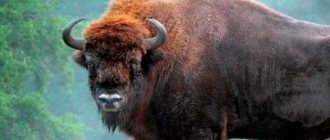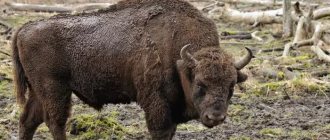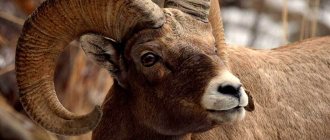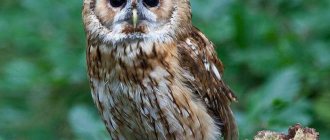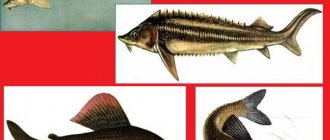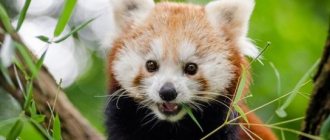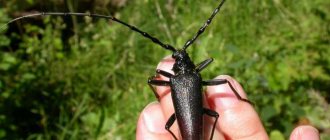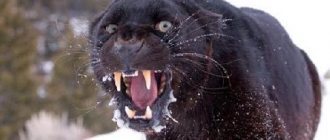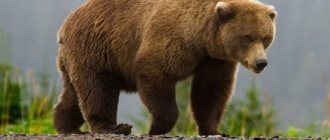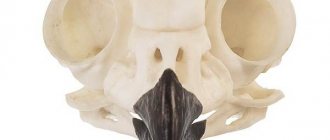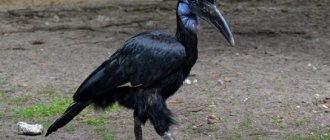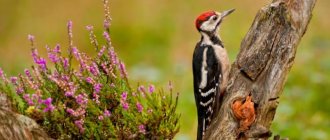Rare and endangered species of animals, birds and plants are included in the Red Book This book was created to preserve and transmit information about rare species to future generations, in order to preserve these species of animals and birds.
Now they are taking objective information from a book that was published in 2001.
Enter there:
- name of rare species;
- description;
- the places where they live;
- photos.
The Red Book of Russia itself is divided into 3 sections, they include:
- birds;
- Types of animals;
- insects.
1,334 species of birds live and breed in Russia, and 111 species of birds are included in the Red Book. Many of them live exclusively in nurseries and nature reserves.
Over the past fifty years, people have destroyed 1/4 of all known bird species, and 11% of those remaining are on the verge of extinction.
The article describes 10 species of rare and endangered birds, the description of which is in the Red Book.
Mandarin duck
Ducks are considered a rare species. They weigh from 400 to 700 g. Their wings are 21-24 cm long. The birds live in the Sakhalin and Amur regions. There are now 15 thousand pairs of ducks in the Russian Federation. Males have bright orange plumage. The population lives on abandoned mountain lakes and rivers, as the ducks are excellent swimmers and excellent floaters.
If we compare them with other species of ducks, they absolutely do not like diving; they dive only when wounded. They rest, preferring to sit on rocks and tree branches. They eat seeds, algae, and acorns. But if this food is not enough, they can eat shellfish and fish eggs. When ducks lay eggs, the chicks hatch within a month.
In Russia, ducks are dying out due to the fact that raccoon dogs, foxes, and raccoons destroy their nests. Hunting this species is now prohibited.
Pink Pelican
Pelicans settle near the Volga River, on the islands of Martynyachiy, Yeisk Spit, and Tuzla. The birds are classified as an endangered species and are included in the Red Book. These birds catch fish with their beaks. The body length of the male is up to 1.85 m, and the wingspan is up to 3.8 m. Pelicans do not dive, but simply plunge their beak into the water and grab a fish with it.
The number of birds is decreasing due to the use of pesticides, which flow from the ground into rivers and the sea. Their range is also shrinking as people drain water bodies. Pelicans gather in flocks and hunt fish together. They also fly to nesting sites in flocks, and then form pairs and reproduce. In 2-3 days, the female builds a nest, and the male gets grass and transfers it to the female in his beak. Chicks hatch from eggs on day 26. They develop plumage 70 days after birth.
Walkthrough of 145 Towers of Words level 6-10
Level 6
1. Shark, tasting, prey, hungry, protein, wardrobe, barefoot, vanilla, butterfly.
2. Lemonade, acorns, delivery, potatoes, animals, candy, crab, toy, art.
3. Treatment, plankton, parasite, flour, mussel, small, orchestra, notes, scarecrow.
4. Sweater, scorpion, plate, advertising, trot, texture, verse, passage, training.
5. Lizard, flora, fan, storm, hijab, ball, tsunami, torch, apple.
6. Beaver, scenery, bus, baseball, memory, bottle, evening, gorilla, attraction.
7. Zodiac, loading, incubator, dragon, shower, cube, food, goat, canoe.
8. Cave, lemon, couple, makeup, garbage, mineral, weather, autumn, dive.
9. Jump, freedom, bite, rubber, sauce, coach, market, tango, ostrich.
10. Label, flowers, skill, guide, farmer, depth, code, turtle, mane.
Level 7
1. Gondolier, comedy, sunset, sparks, sofa, dhoti, play, mud, swimming.
2. Hug, mosaic, fox, pyramid, mongoose, chicken, stripes, apiary, despair.
3. Pillow, vigilance, sandwich, gerbera, crossbow, incense, sunrise, veteran.
4. Breakfast, spectacle, gosling, yogurt, labyrinth, compass, fight, beauty, book.
5. Shaggy, ball, matador, spicy, pepper, parade, puppeteer, abundance, platform.
6. Leash, mesh, blue, holiday, romance, fabric, dust, pianist, snowman.
7. Temple, shiitake, fantasy, tulip, shield, dove, clock, photographer, egg.
8. Clay, collage, house, fright, star, grizzly, yellow, delicacy, cappuccino.
9. Summer, island, malachite, grasshopper, parking, mosque, exchange, bullfight, column.
10. Sports, congratulations, sphere, title, snowboard, bird, parallel, solution, cigar.
Level 8
1. Porcelain, pharmacy, buffet table, sentry, sumo, shoelaces, toucan, terrier, basketball.
2. Grimace, bracelet, broom, asana, djembe, inside, hole, insomnia, height.
3. Wake, petal, hood, story, duet, poppy, giraffe, shrimp, thorn.
4. Planet, greeting, origami, celery, sail, copper, motorcycle, crustaceans, number.
5. Taz, three, listeners, physalis, mustache, wall, too much, photo, artist.
6. Guest, entrance, guide, two, wine, Antarctica, fan, library, broccoli.
7. Ingredients, canapes, ambush, scarf, sour, mandala, lemur, diesel, raccoon.
8. Father, slippery, Olympics, breakthrough, horns, science, peak, manicure, light.
9. Doubt, heavy, cereal, farm, tongue, scars, bench, garlic, shadow.
10. Vitamins, beard, castle, universe, angel, ballet, dessert, beret, nest.
Level 9
1. Red, thirst, collection, magnolia, sloth, silence, smell, chestnut, stone.
2. Drink, pizza, beautiful, plant, parquet, holy, friendly, molecule, dangerous.
3. Plaster, platypus, bloom, chimpanzee, flock, phosphorus, jaguar, troglodyte, funny.
4. Raven, grill, wreath, meringue, aura, guitar, swamp, adrenaline, orange.
5. Umbrella, ship, frame, funny, man, beak, lavender, yoga, marina.
6. Souvenir, seller, event, drawing, reflection, foam, monkey, family, search.
7. Fruit, Sanskrit, sandwich, lamb, tradition, hairpin, smog, hurricane, statue.
8. Fringe, sad, vacation, delight, cheerful, dish, arch, globe, emerald, perfume.
9. Palm tree, devices, rabbit, kangaroo, companion, moon, jellyfish, peonies, lonely, calendar.
10. Guests, carnation, architecture, acquaintance, dolphin, algae, hedgehog, tower, vacuum.
Level 10
1. Cinnamon, trust, pocket, eggplant, mess, willow, peas, scuba diver, gate.
2. Membrane, collect, blade, float, fly agaric, continent, sakura, orangutan, space.
3. Expedition, notebook, herd, banquet, football, alphabet, four, silhouette, binoculars.
4. Scythe, failure, instinct, stuntman, echidna, magnet, caterpillar, white, ascension.
5. Faberge, relationships and python, bending, sun, religion, tropics, sushi, pig.
6. Fountain, trampoline, snake, mustard, divide, buffalo, seagull, sluice, indignation.
7. Restaurant, zebra, apartments, composition, bush, casino, mask, peach, order.
8. Sapphire, trumpet, wheat, regret, aroma, emotions, fight, chess, façade.
9. Bones, canyon, hierarchy, ram, cobra, airship, log, greyhound, tie.
10. Leopard, spaniel, box, loss, possum, Easter, muddy, glow, rusty.
To continue passing the game 145 Towers of Words, select the desired level below.
Level 1-5 | Level 6-10 | 11-15 level
Owl
These are the largest birds from the owl family. Their wingspan is up to 1.9 m. They have a massive body 60-75 cm long, their feathers are mostly red and ocher, their eyes are orange, and above them there are “eyebrows” of long feathers. The weight of the female is 3-3.2 kg, and the male is 2.1-2.7 kg. These are predators that sleep during the day and at night hunt mice and other rodents, snails, and small birds. Each eagle owl has a specific territory where it hunts.
Hunters use eagle owls to catch hares and partridges. True, eagle owls themselves can be dangerous to people. Eagle owls fly very quickly; immediately after they take off, they can fly at full speed. In Russia, the number of birds is gradually decreasing.
little swan
Swans live only in Russia. They have a wingspan of up to 1.95 m. They have a body length of 1.15–1.27 m and weigh 4–8 kg. Swans have snow-white feathers and a black beak. They feed on grass, berries, potatoes, and sometimes catch small fish . When swans turn 3 years old, they find a mate with whom they remain with for the rest of their lives. Swans make nests on dry small hills, sometimes the nests left over from the previous pair are used by another pair.
The cubs hatch from the eggs after a month and immediately the swans lead them to the pond. And the chicks begin to fly after 45 days.
Currently, the Russian Federation is trying to restore the number of birds. They are also included in the Red Book.
The Red Book of Russia
The Red Book of the Russian Federation is a publication divided into several sections:
- Animals;
- Birds;
- Insects.
Each of the sections contains an annotated list, just like the book itself, divided into categories from 0 to 5:
- Extinct species (category 0);
- Critically Endangered (Category 1);
- Rapidly declining in numbers (category 2);
- Rare (category 3);
- Having an uncertain status (category 4);
- Recovering (category 5).
Based on the Red Book of the Russian Federation, over the course of several decades, many regional ones have appeared, that is, those that contain a list of rare or endangered taxa in a specific region of the Russian Federation (in the Moscow, Leningrad, Kaluga regions, etc.). Today, the information from the Red Book of the Russian Federation, published in 2001, is objective.
Red-footed ibis
The bird has white and pale pink plumage, the legs are brownish-red, and the bird has a red tint around its eyes. The beak is black, and on the head there is a crest flowing down to the neck. Ibis settles in the Far Eastern region. Birds have been declared extinct in Japan. A pair of ibises was observed in Russia in 1990. It is unclear whether the birds exist in the Russian Federation now. The voice resembles the cawing of a crow .
Ibises live near swampy rivers; they catch fish and reptiles. When ibises turn 2 years old, they select a mate with whom they live for the rest of their lives. After the female lays eggs, both parents incubate them alternately. After 28 days, the eggs hatch into babies. Ibises are also listed in the International Red Book.
Complete list of birds listed in the Red Book of Russia
| Black-throated loon White-billed loon White-backed albatross Pied petrel Lesser storm petrel Rosy pelican Dalmatian pelican Crested cormorant Little cormorant Egyptian heron Great egret Yellow-billed heron Common spoonbill Karavaika Red-legged ibis Far Eastern stork Black stork Common fl amingo Canada goose Aleutian brant Atlantic goose American goose Red-breasted goose Lesser white-fronted goose White-headed Barnacle Goose Tundra Swan American Swan Crested Shelduck Kloktun Anas Marbled Teal Mandarin Duck Pochard Bera White-eyed Pochard Duck Scaly-tailed Merganser Osprey Red Kite Steppe Harrier European Tuvik Buzzard Common Buzzard Short-toed Eagle Crested Eagle Steppe Eagle Greater Spotted Eagle Small Spotted Eagle Imperial Eagle Golden Eagle Long-tailed Eagle -white-tailed Bald eagle Steller's sea eagle Bearded vulture Black vulture Griffon vulture Gyrfalcon Saker falcon Peregrine falcon Steppe kestrel Ptarmigan Caucasian grouse | Siberian grouse Bearded partridge Manchurian crane Japanese crane Siberian crane White-naped crane Black crane Demoiselle (crane) Red-legged crake White-winged crake Horned moorhen Sultan Bustard, European subspecies Bustard, East Siberian subspecies Bustard Jack (bird) Avdotka Southern golden plover Ussuri plover Caspian plover Lapwing Stilt Avocet Sandpiper magpie, mainland subspecies Magpie sandpiper, Far Eastern subspecies Okhotsk ulit Lopaten Dunlin, Baltic subspecies Dunlin, Sakhalin subspecies South Kamchatka Beringian sandpiper Yellow sandpiper Japanese snipe Thin-billed curlew Greater curlew Far Eastern curlew Asian snipe Godwit Steppe tirkush Black-headed laughing gull Relict gull Chinese gull Red-legged talker White gull Chegrava Aleutian tern Little tern Asian long-billed murrelet Short-billed murrelet Crested old eagle Eagle Fish owl Great piebald kingfisher Collared kingfisher European middle woodpecker Rufous-bellied woodpecker Mongolian lark Common gray shrike Japanese warbler Aquatic warbler Paradise flycatcher Great stonechat Reed su tora European blue tit Shaggy nuthatch Jankowski's bunting |
Jankowski's oatmeal
The birds are considered an endangered species worldwide. In Russia, the bird was seen in the south of Primorsky Krai near the village of Khasan, but it has probably now disappeared in Russia. The reason for the extinction is unsuitable conditions in the places where nests are built, for example, burning dry grass. The body length of males is 15.3-16.4 cm. The wing in males is 7.2-7.8 cm, in females 6.8-7.2 cm.
Buntings fly from place to place, gathering in flocks and hunting insects together. They live in the steppe, building nests on tree branches and on the ground. Nests are made from grass. Females lay 4-5 eggs and incubate them. When the chicks hatch, the male feeds them. Two generations of chicks can appear in one year .
Buntings are the same size as regular sparrows. The bunting's body is brownish above, lighter below, and there is a chestnut-colored spot on the chest.
Steppe kestrel
Kestrels live in southwestern Russia and southern Siberia. These are predators that catch insects and sometimes eat scorpions. Kestrels gather in flocks and hunt in the steppe. Sometimes it happens that in the spring kestrels catch small rodents. Birds that are 1-2 years old select a mate, breed, and next season they have different partners.
The body length of the kestrel is 29-33 cm, and the wingspan is 58-75 cm, the weight of the male is 90-180 g, and the female is 135-210 g. The birds make nests in the depths of rocks, on the hills. The female digs a hole in the ground to create a nest. The eggs hatch into babies after 28 days. The parents begin feeding the chicks, and after 28 days the young fly away from the nest. Recently, the number of kestrels has sharply decreased, as they eat insects , and in agriculture it is common to use pesticides to eliminate insects. The birds are considered to be endangered.
New Caledonian owljar (black-backed owl frogmouth)
So little is known about it that the bird is sometimes called the mysterious nightjar. You can meet them only on the island. New Caledonia. For all this time, only two specimens fell into the hands of ornithologists, and this was back in 1880 and 1915. The last time the bird was seen in the wild was in the 90s. According to scientists, the number of nightjars does not exceed 50 individuals.
Avdotka
This bird has huge expressive eyes and long legs. The body is up to 45 cm long, and the wingspan is 80 cm. The avdotka flies very rarely, only if it is in danger. Most of the time the bird walks on its long legs. During the day, the avdotka rests, lying in the shade, and at night it hunts mice, snails, lizards, and frogs. In April, the female builds a nest on the soil and lays 2-3 eggs.
Avdotka lives in deserts and steppes. Near the Volga and in the foothills of Altai. On the upper part of her body she has greyish-red feathers with brownish-black stripes, and on the underside her body is cream-colored. The tail feathers and flight feathers are absolutely blue-black. Birds do not flock and prefer to live alone.
Steller's sea eagle
Eagles are rarely seen outside the Russian Federation, only when they arrive to spend the winter. In Russia, they live on the Kamchatka Peninsula and the shores of the Sea of Okhotsk. This is the largest and heaviest of the species of the eagle subfamily. An eagle can weigh 9 kg. The sea eagle is so named because it has snow-white middle wing coverts . These predators catch large fish and are very fond of salmon. In addition, eagles can catch hares, arctic foxes, seals, and sometimes eat carrion. They live along the coast near the sea, and make nests on the tops of trees.
Eagles are very cautious and have difficulty making contact with humans. Because of this, it is poorly understood how these predators reproduce.
Spoonbill
The spoonbill has snow-white plumage and a beak that flares at the end, similar to sugar tongs. Spoonbills have slightly shorter legs than herons. The color of the legs and beak of spoonbills is black. Body length is up to 1 m, its weight is 1.2-2 kg. Wingspan 1.15-1.35 m.
At the moment there are about 60 pairs of birds. The species is dying out due to the fact that after hatching from eggs, 60-70% of the cubs die within 1 year, and the birds begin to reproduce when they are 6 years and 5 months old, and they live for 10-12 years.
Spoonbills lived on the coasts of fresh rivers and lakes , feeding on fish, insects and frogs. Now they are mainly found only in nature reserves.
Ghost of the Forest - Kagu
Endemic to the Pacific island of New Caledonia, they are relatively large, virtually flightless birds with gray plumage. Kagu are a landmark and the pride of the local population. The half-meter bird, weighing about 1 kg, slightly resembles a chicken. The dense body with a small head is decorated with a high (12-13 cm) crest. When the bird is excited, it rises up, turning into a magnificent resemblance to an Iroquois.
According to ornithologists, kagus once flew no worse than other birds, but lost their ability as unnecessary. Now they run fast and very rarely take off. An amazing feature of the species is close family life and mutual assistance. When communicating with fellow birds, birds make strange sounds such as hissing, rattling, crackling and even barking, which can be heard at a distance of 1.5-2 km. The modern population numbers no more than 1,000 individuals, and the reason for its decline is people and their faithful companions - cats, dogs and rats.
